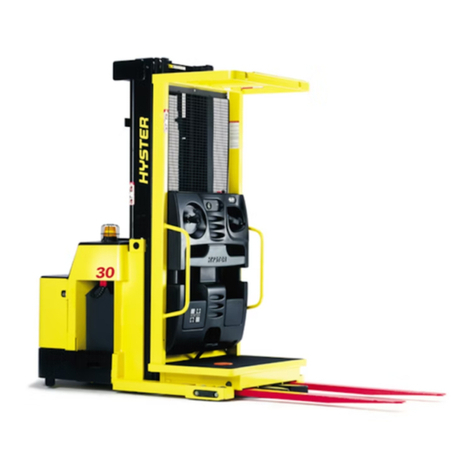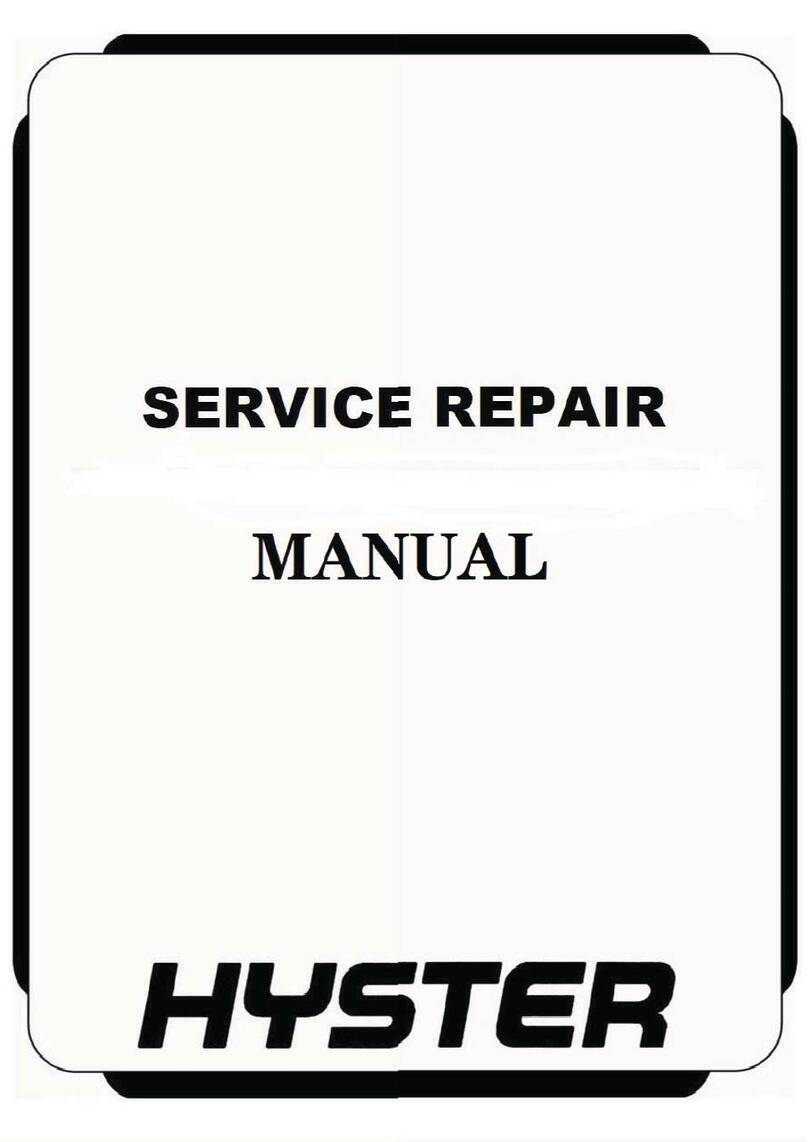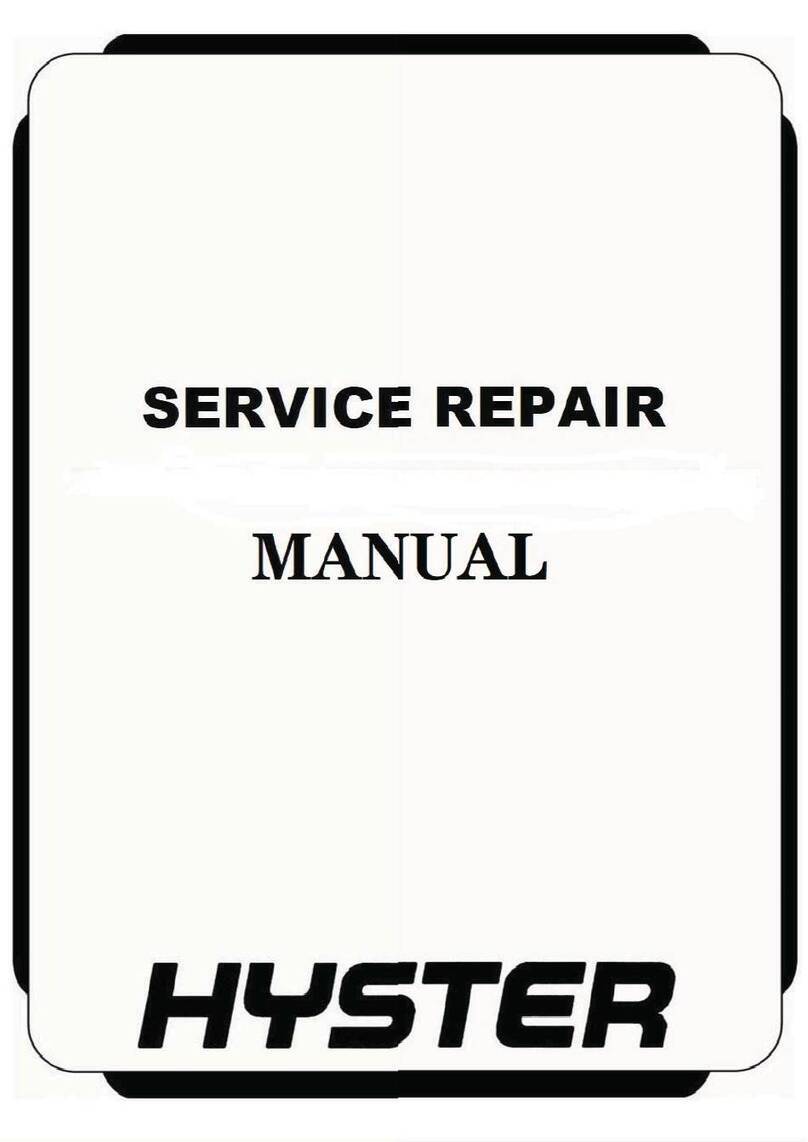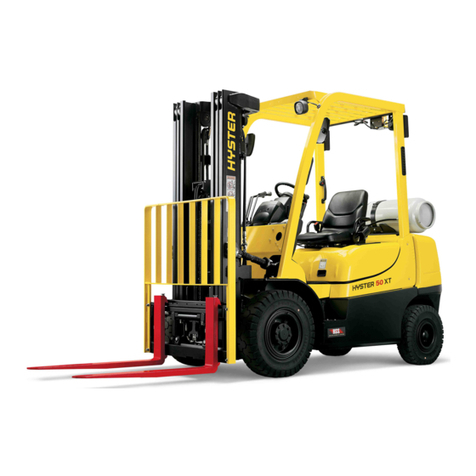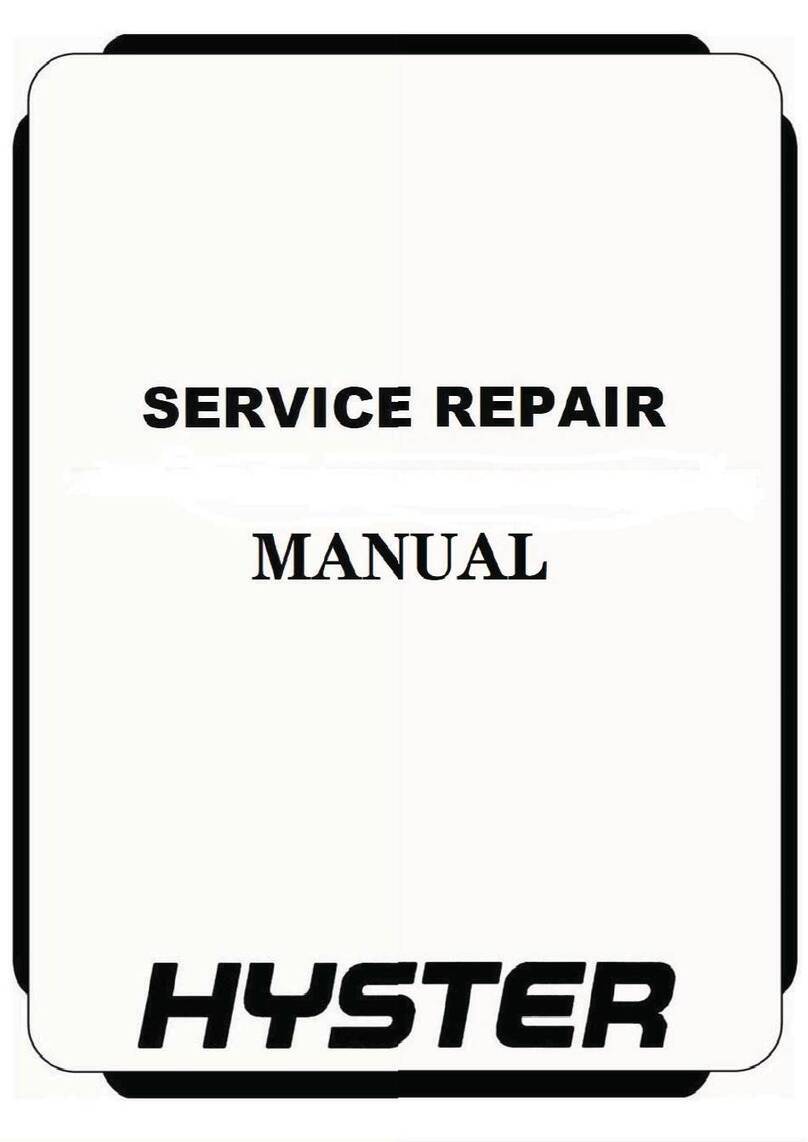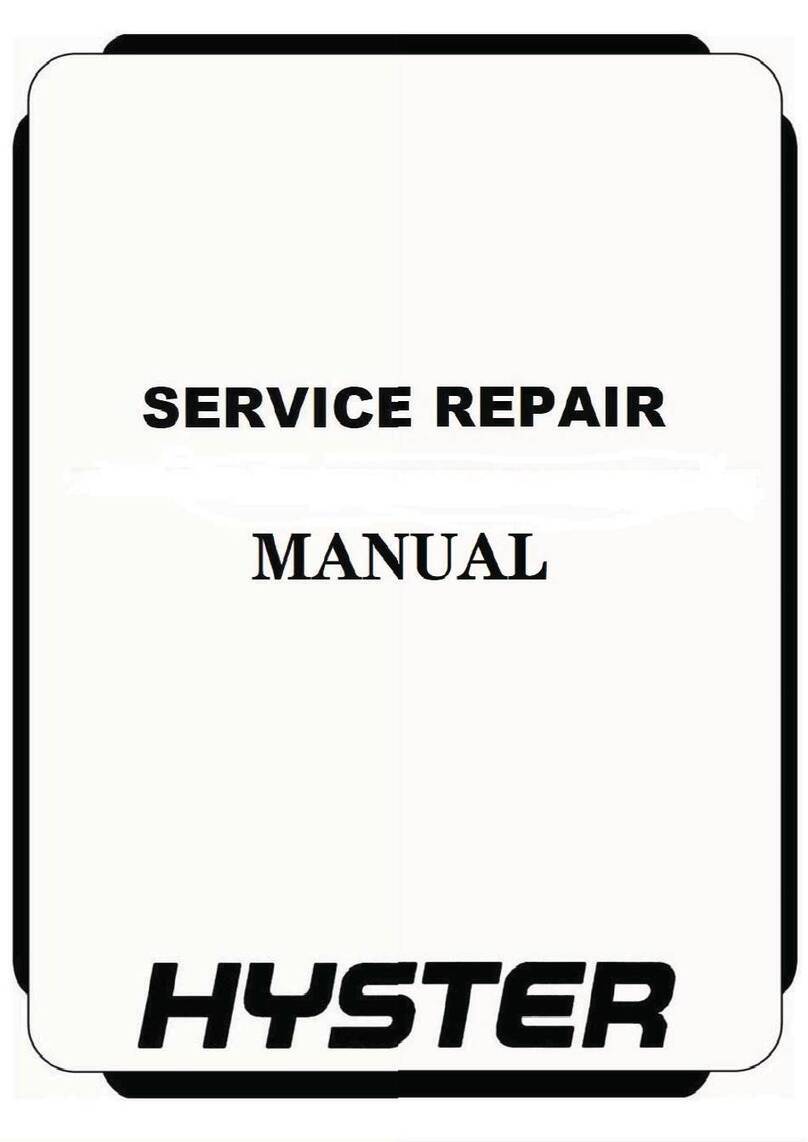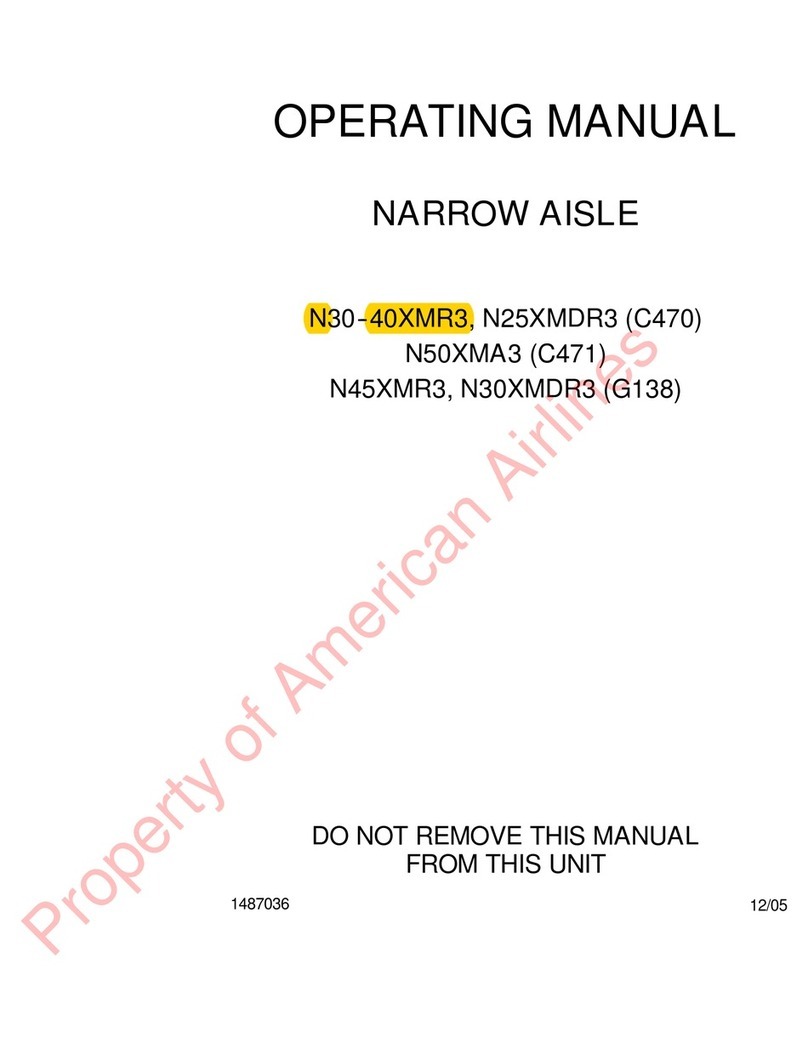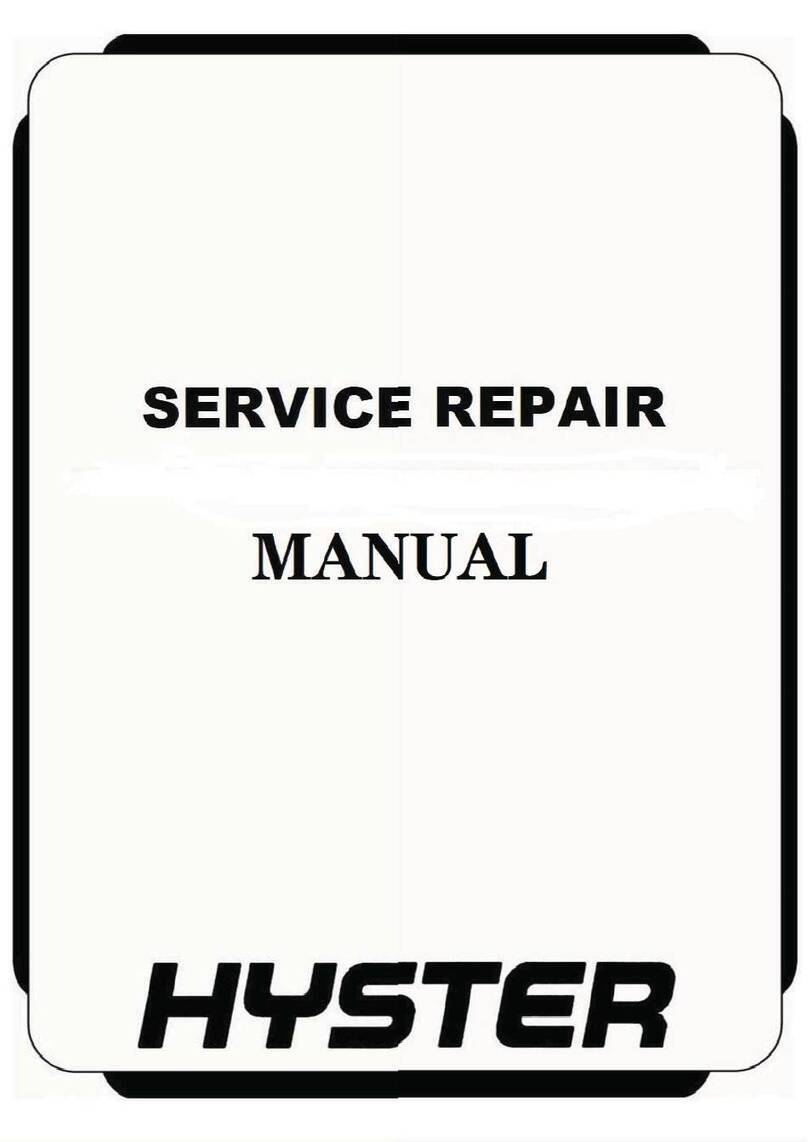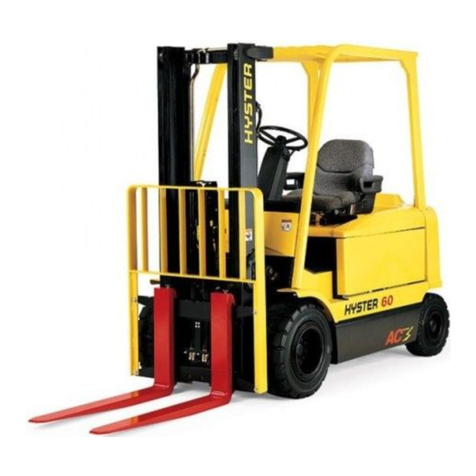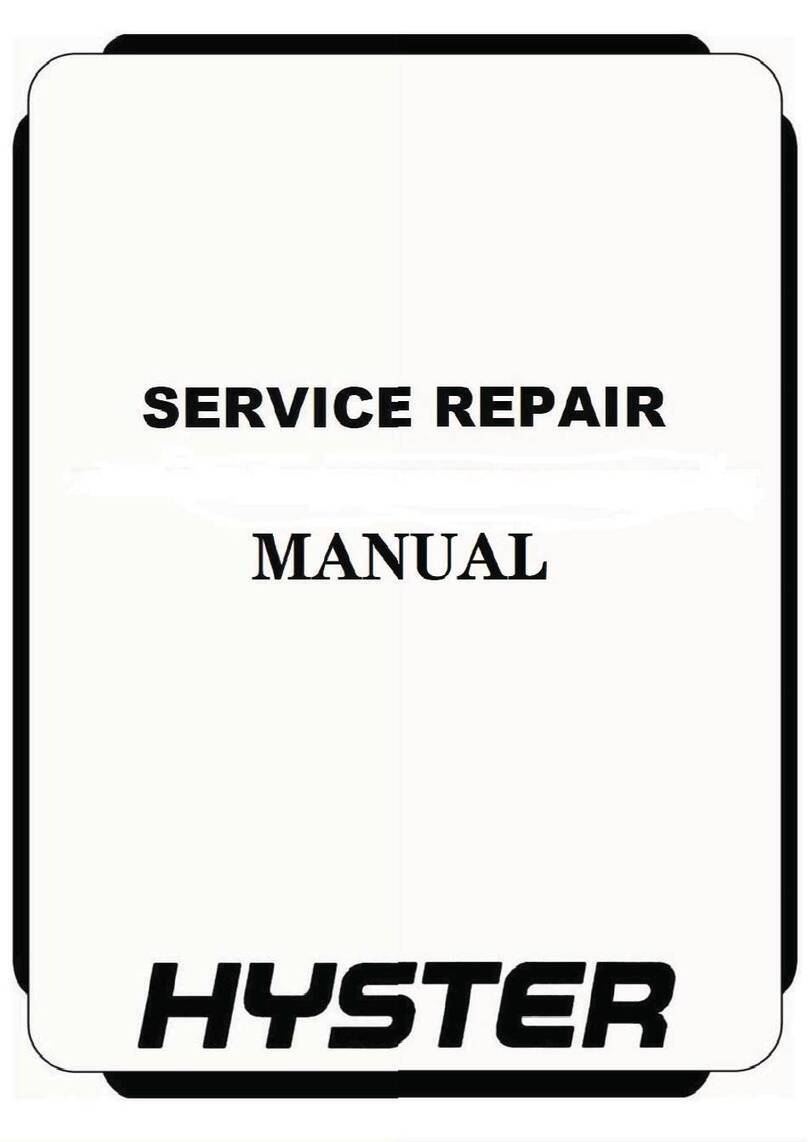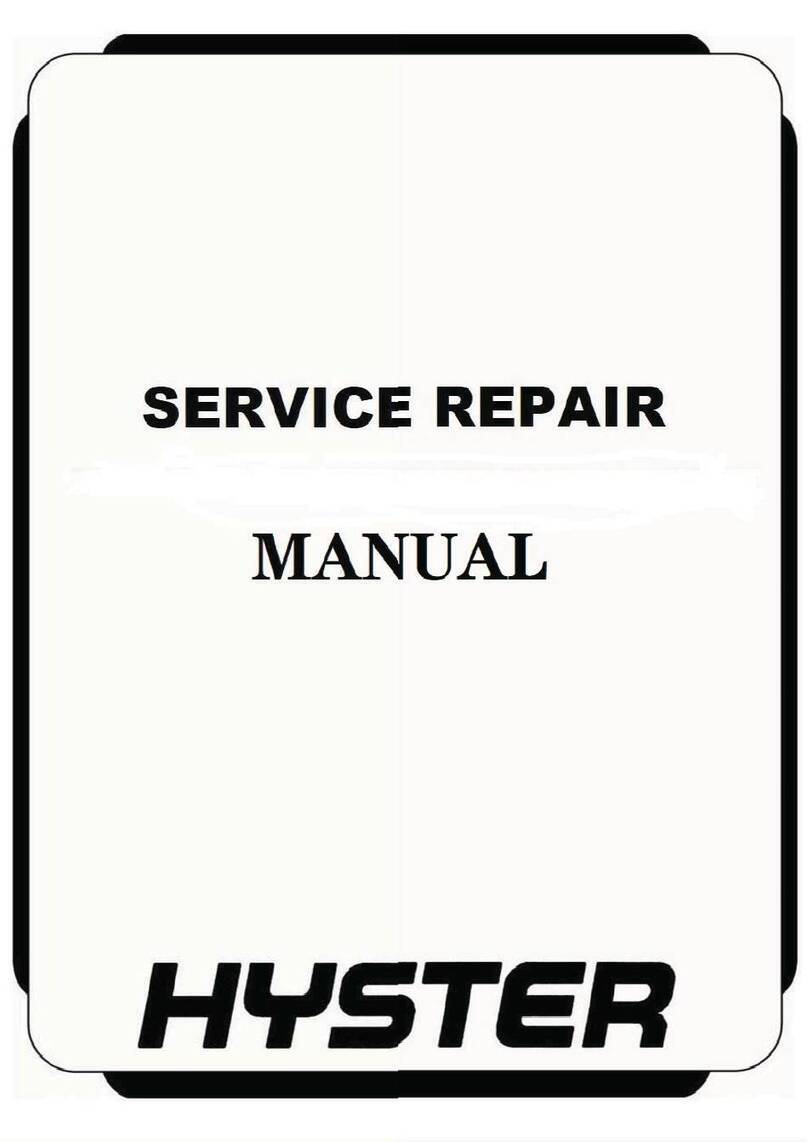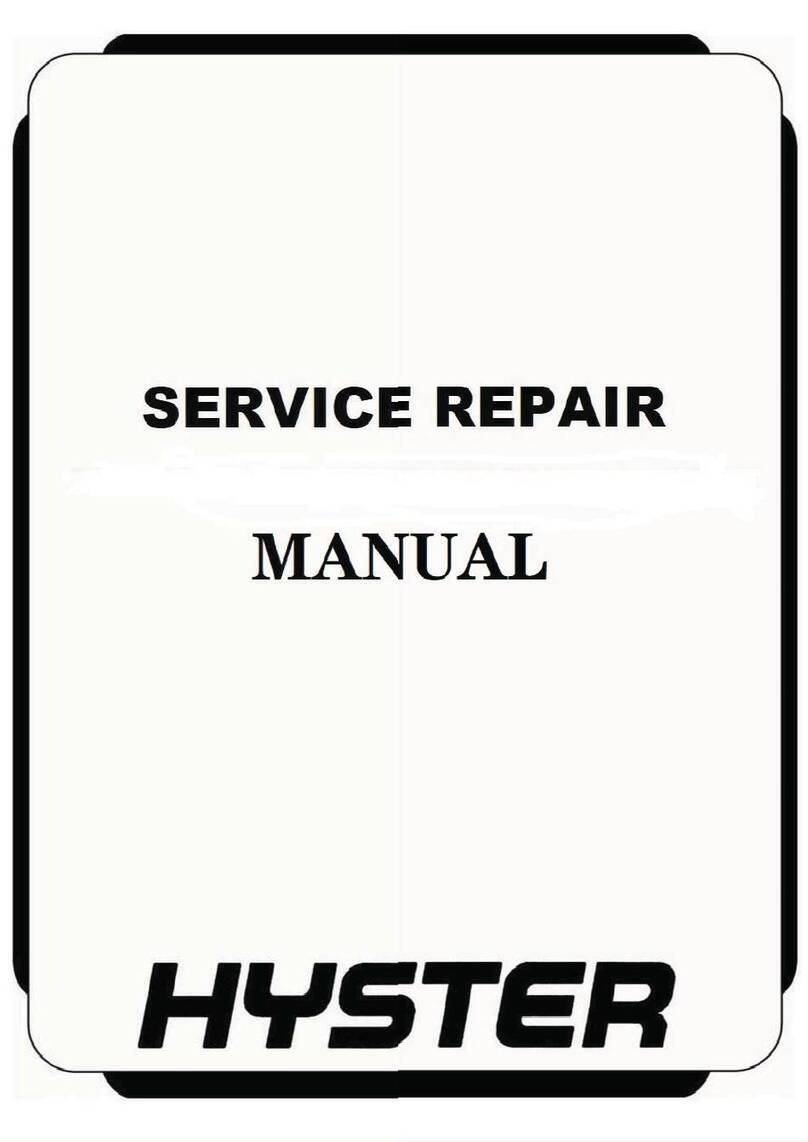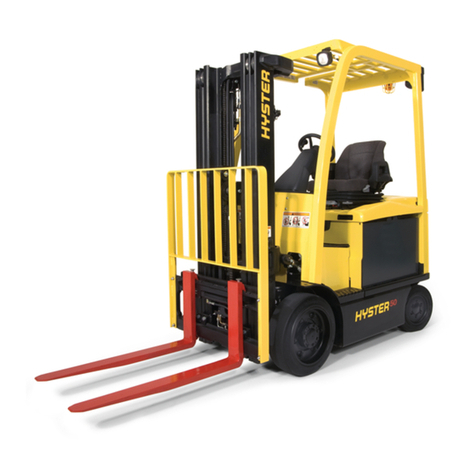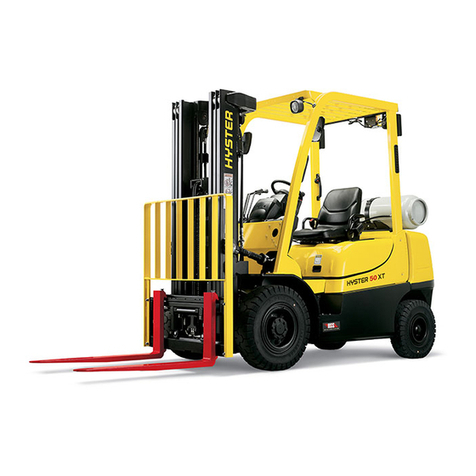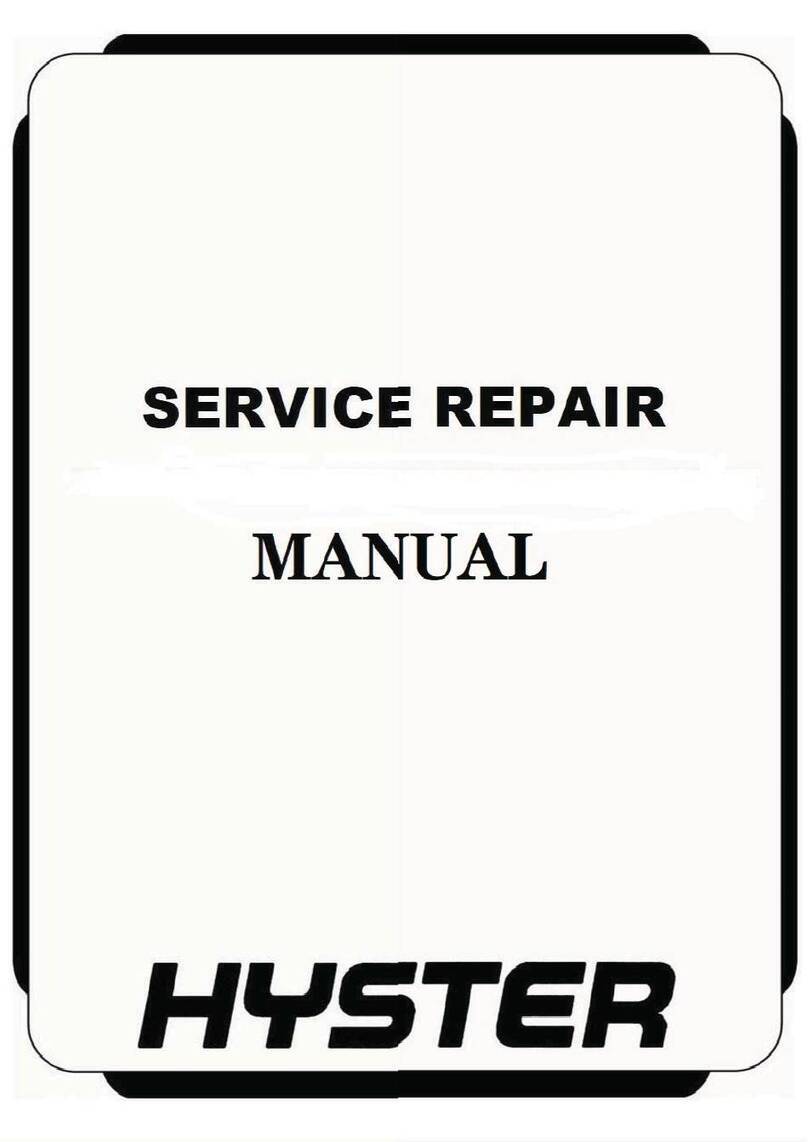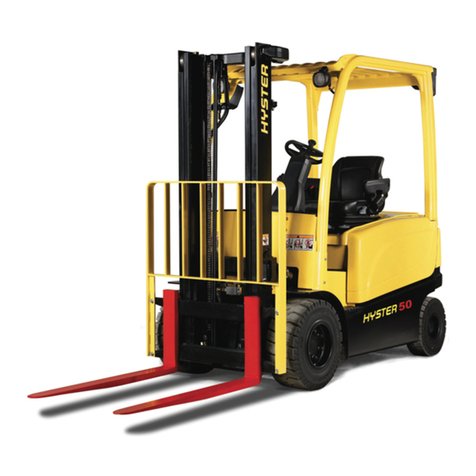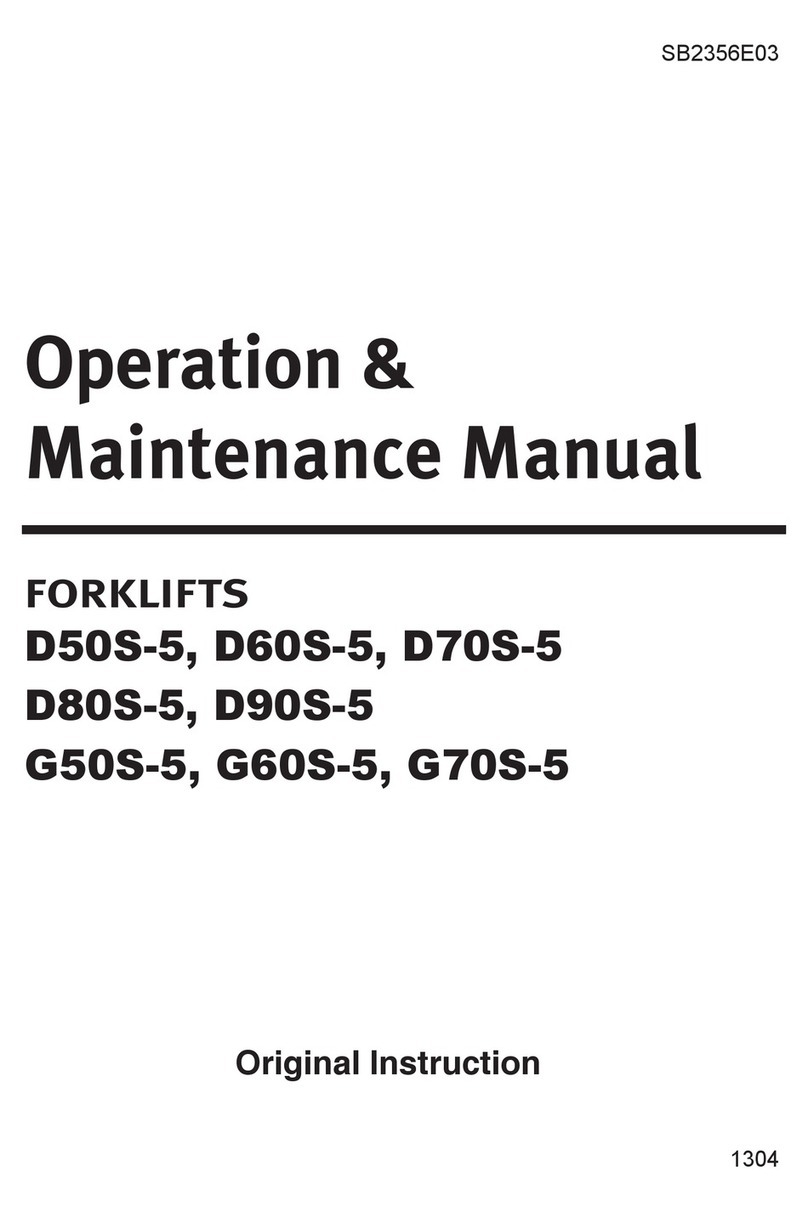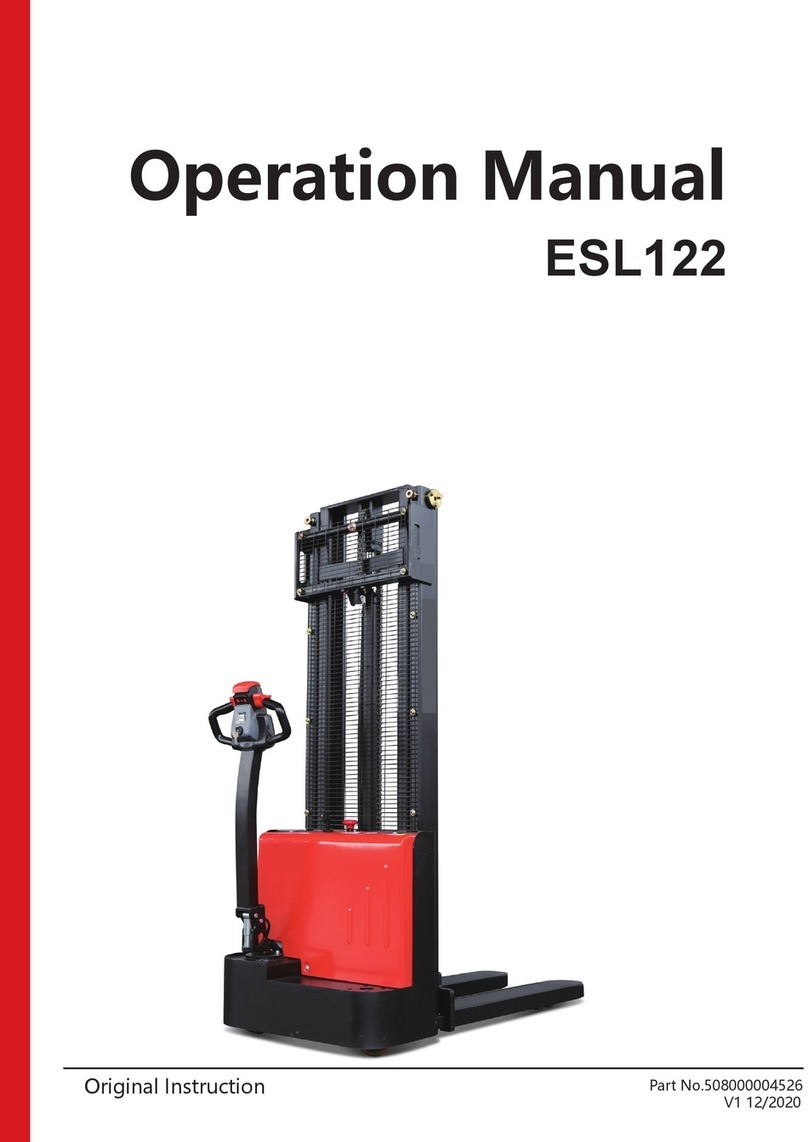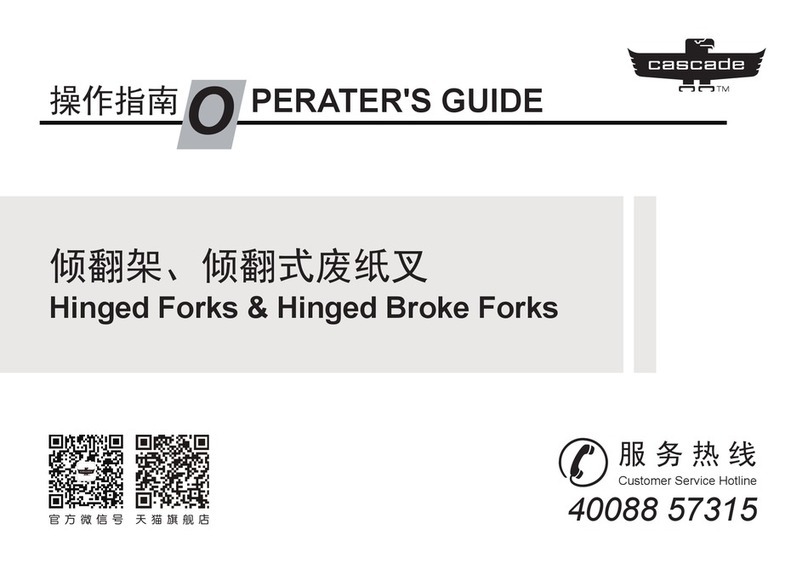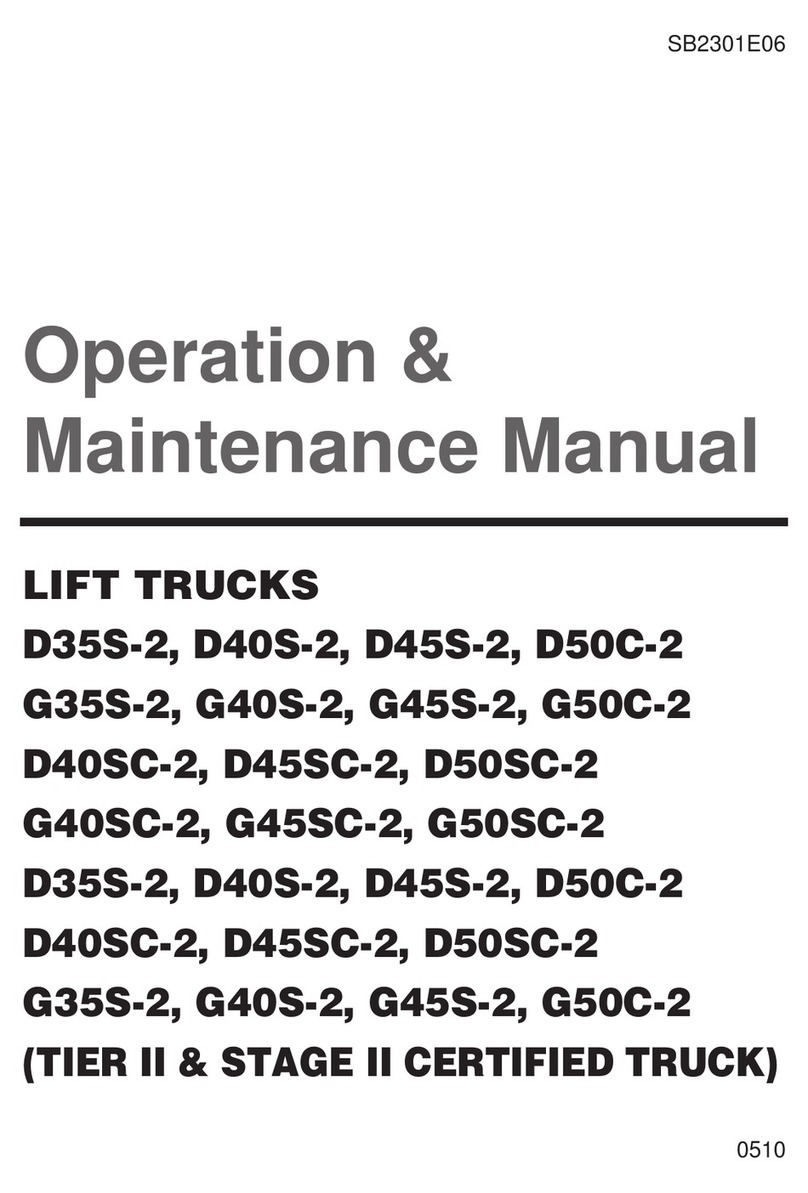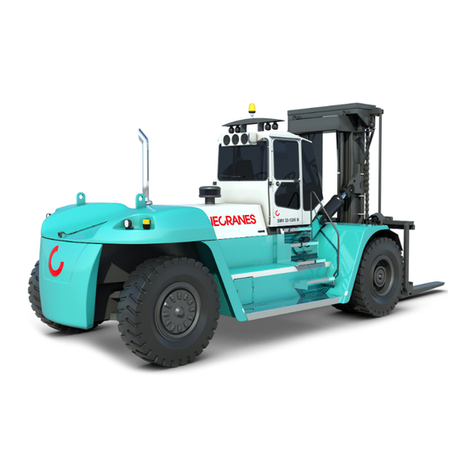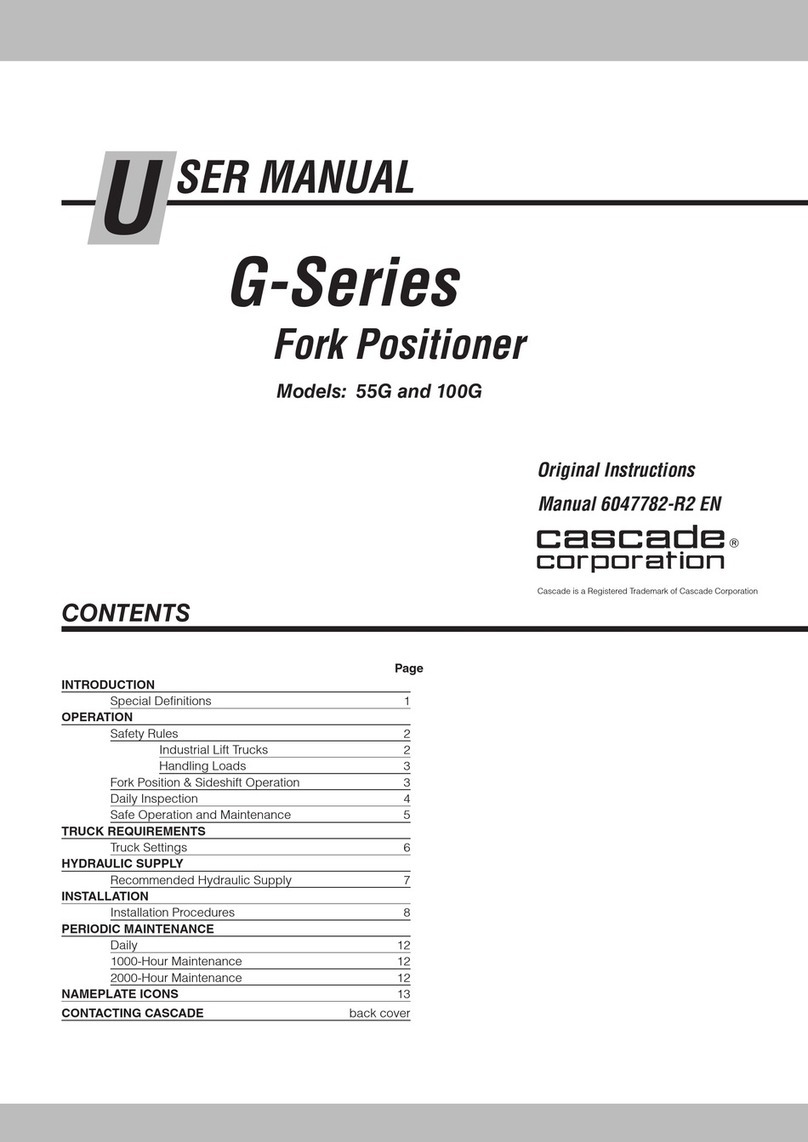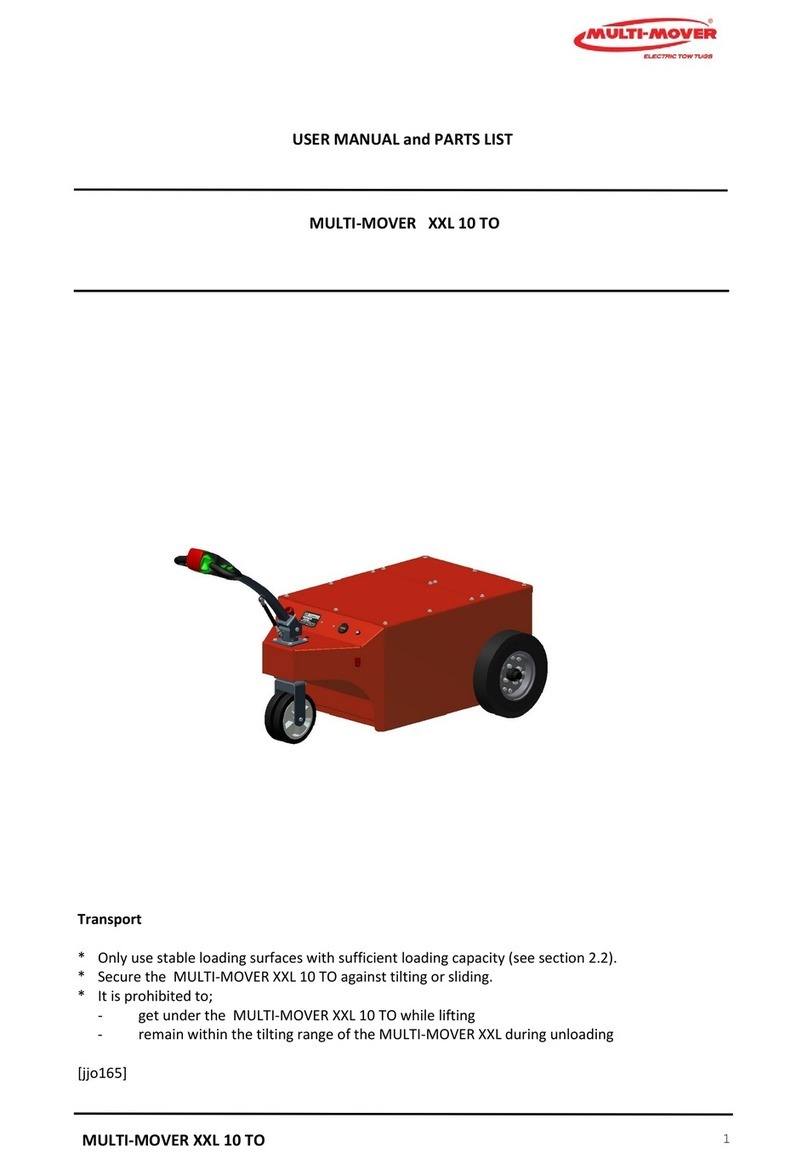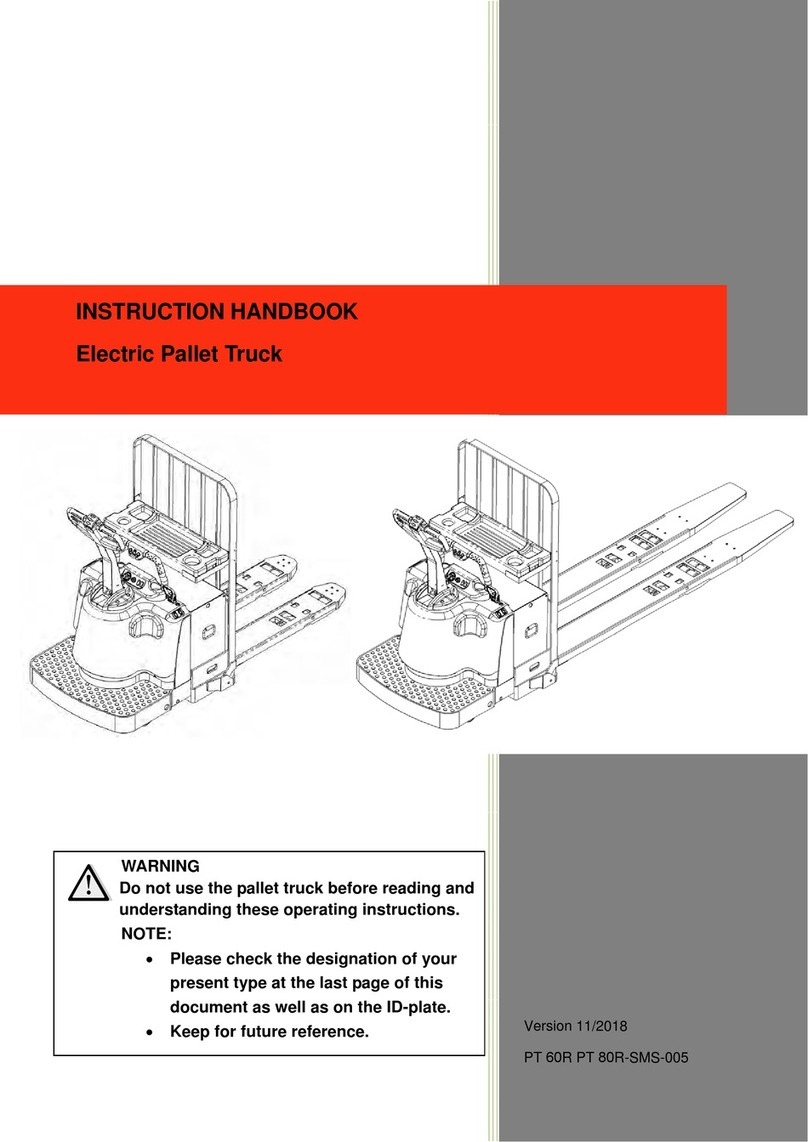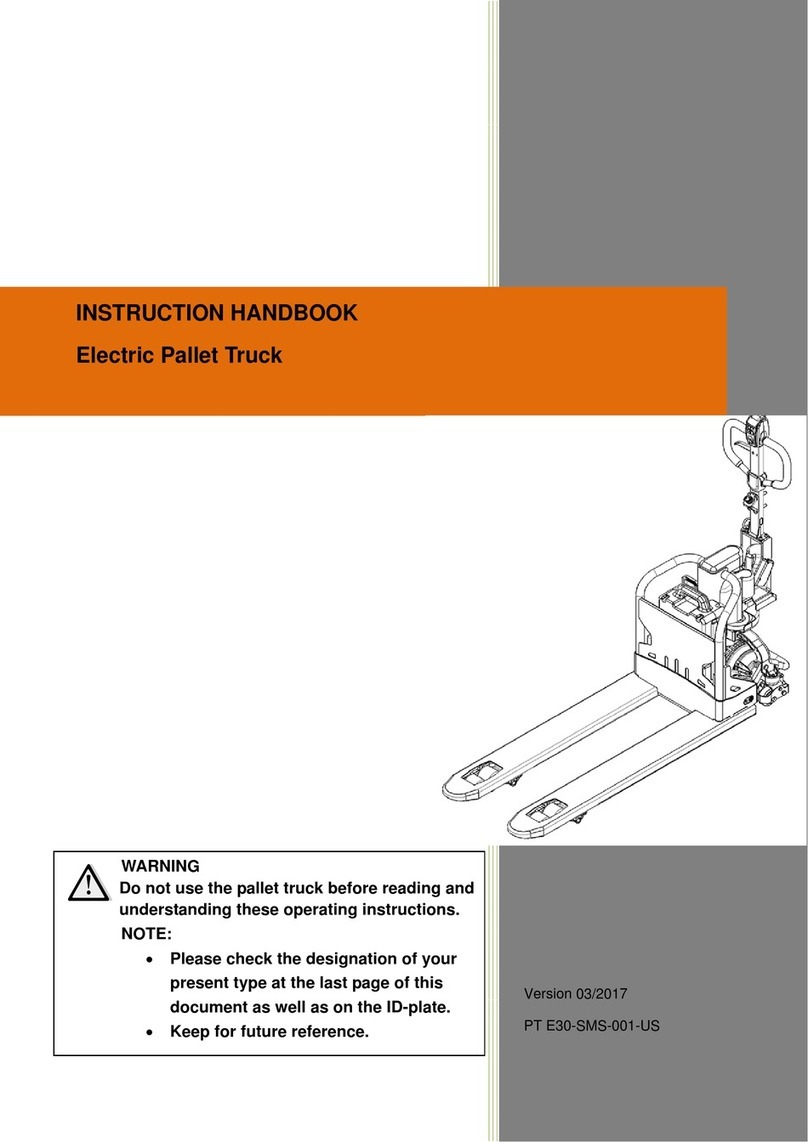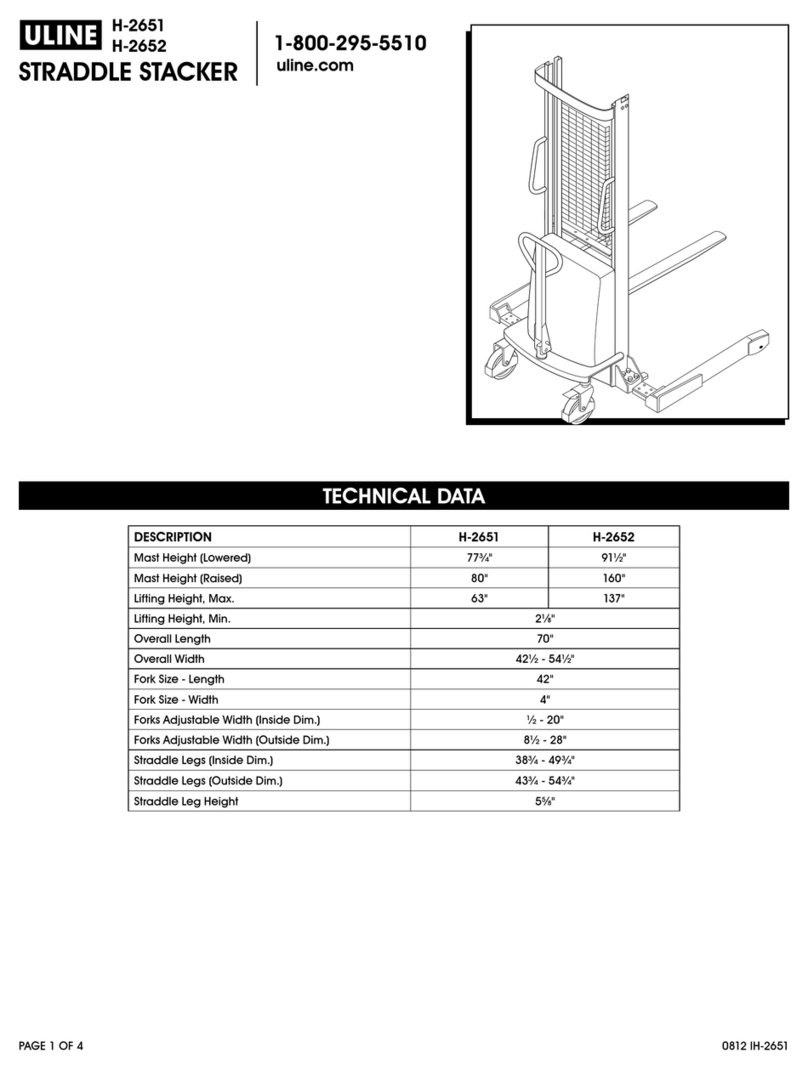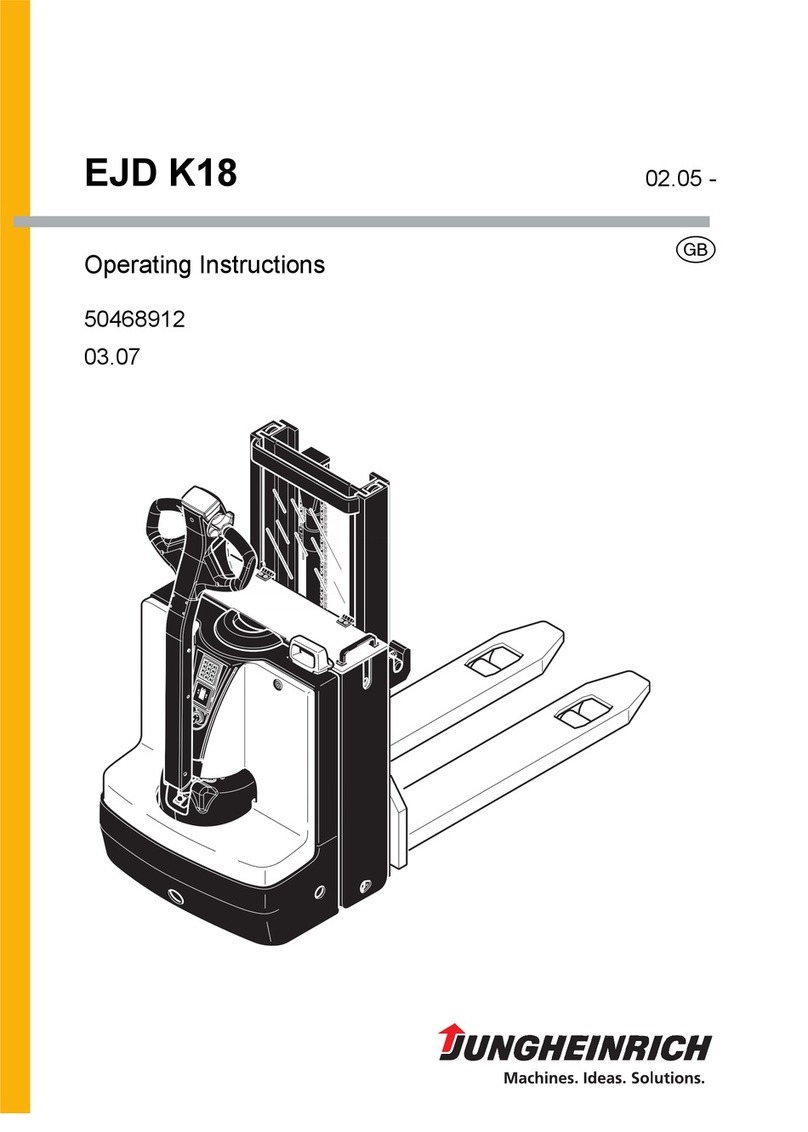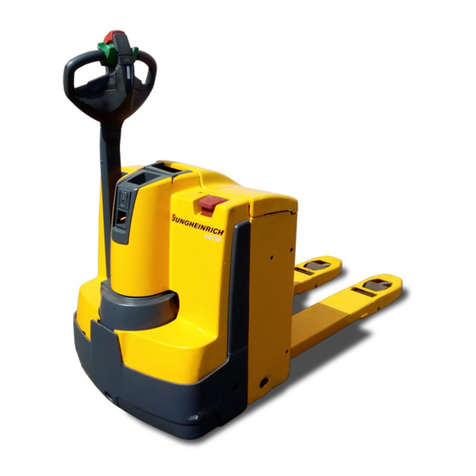
Vista®Masts Table of Contents
TABLE OF CONTENTS
General ............................................................................................................................................................... 1
Description and Operation ................................................................................................................................ 1
Carriages........................................................................................................................................................ 1
Two-Stage Mast With Limited Free-Lift ...................................................................................................... 1
Two-Stage Mast With Full Free-Lift Mast ................................................................................................... 2
Three-Stage Mast With Full Free-Lift ......................................................................................................... 3
Safety Procedures When Working Near Mast.................................................................................................. 5
Forks Replacement ............................................................................................................................................ 7
Remove and Install........................................................................................................................................ 7
Hook Fork .................................................................................................................................................. 7
Remove .................................................................................................................................................. 7
Install..................................................................................................................................................... 7
Pin Fork ..................................................................................................................................................... 8
Remove .................................................................................................................................................. 8
Install..................................................................................................................................................... 8
Carriage Repair.................................................................................................................................................. 8
Remove ........................................................................................................................................................... 8
Sideshift Carriage Repair.................................................................................................................................. 10
Sideshift Carriage (Earlier Designs) ............................................................................................................ 10
Disassemble............................................................................................................................................... 10
Assemble.................................................................................................................................................... 11
Install......................................................................................................................................................... 14
Sideshift Carriage (1993 and Later Design) ................................................................................................ 14
Remove....................................................................................................................................................... 14
Repairs ....................................................................................................................................................... 14
Install......................................................................................................................................................... 14
Weight of Mast Parts ......................................................................................................................................... 17
Two-Stage Mast With Limited Free-Lift Repair .............................................................................................. 17
Remove ........................................................................................................................................................... 17
Disassemble ................................................................................................................................................... 17
Clean and Inspect.......................................................................................................................................... 19
Assemble ........................................................................................................................................................ 19
Install ............................................................................................................................................................. 21
Two-Stage Mast With Full Free-Lift Repair..................................................................................................... 21
Remove ........................................................................................................................................................... 21
Disassemble ................................................................................................................................................... 21
Clean and Inspect.......................................................................................................................................... 23
Assemble ........................................................................................................................................................ 23
Install ............................................................................................................................................................. 23
Three-Stage Mast With Full Free-Lift.............................................................................................................. 24
Remove ........................................................................................................................................................... 24
Disassemble ................................................................................................................................................... 24
Clean and Inspect.......................................................................................................................................... 24
Assemble ........................................................................................................................................................ 24
Install ............................................................................................................................................................. 26
Mast Operation Check....................................................................................................................................... 28
Lift and Tilt System Leak Check ...................................................................................................................... 29
Lift System..................................................................................................................................................... 29
Tilt System..................................................................................................................................................... 29
Tilt Cylinder Stroke and Backward Tilt Angle Adjustment............................................................................ 30
Lift Chain Adjustments ..................................................................................................................................... 30
©2002 HYSTER COMPANY i

